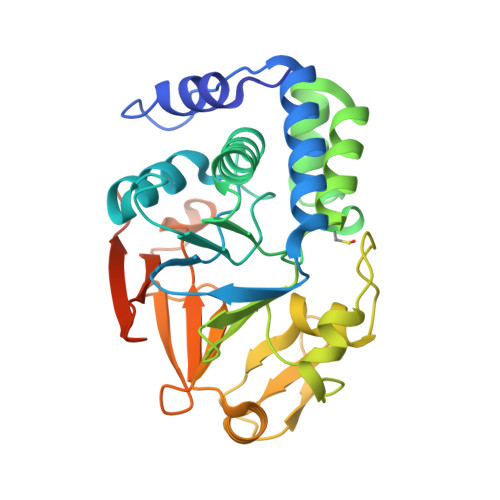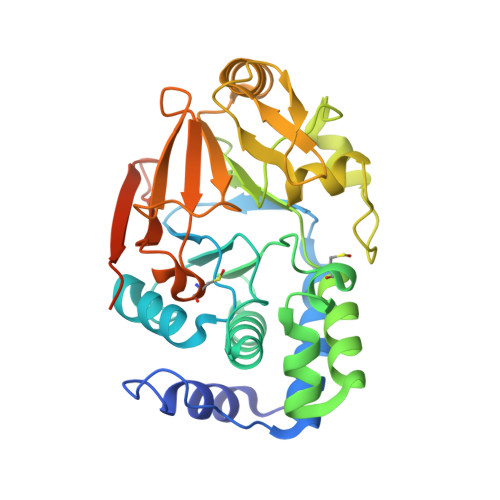Targeted Redox Inhibition of Protein Phosphatase 1 by Nox4 Regulates Eif2Alpha-Mediated Stress Signaling.
Santos, C.X., Hafstad, A.D., Beretta, M., Zhang, M., Molenaar, C., Kopec, J., Fotinou, D., Murray, T.V., Cobb, A.M., Martin, D., Zeh Silva, M., Anilkumar, N., Schroder, K., Shanahan, C.M., Brewer, A.C., Brandes, R.P., Blanc, E., Parsons, M., Belousov, V., Cammack, R., Hider, R.C., Steiner, R.A., Shah, A.M.(2016) EMBO J 35: 319
- PubMed: 26742780
- DOI: https://doi.org/10.15252/embj.201592394
- Primary Citation of Related Structures:
4UT2, 4UT3 - PubMed Abstract:
Phosphorylation of translation initiation factor 2α (eIF2α) attenuates global protein synthesis but enhances translation of activating transcription factor 4 (ATF4) and is a crucial evolutionarily conserved adaptive pathway during cellular stresses. The serine-threonine protein phosphatase 1 (PP1) deactivates this pathway whereas prolonging eIF2α phosphorylation enhances cell survival. Here, we show that the reactive oxygen species-generating NADPH oxidase-4 (Nox4) is induced downstream of ATF4, binds to a PP1-targeting subunit GADD34 at the endoplasmic reticulum, and inhibits PP1 activity to increase eIF2α phosphorylation and ATF4 levels. Other PP1 targets distant from the endoplasmic reticulum are unaffected, indicating a spatially confined inhibition of the phosphatase. PP1 inhibition involves metal center oxidation rather than the thiol oxidation that underlies redox inhibition of protein tyrosine phosphatases. We show that this Nox4-regulated pathway robustly enhances cell survival and has a physiologic role in heart ischemia-reperfusion and acute kidney injury. This work uncovers a novel redox signaling pathway, involving Nox4-GADD34 interaction and a targeted oxidative inactivation of the PP1 metal center, that sustains eIF2α phosphorylation to protect tissues under stress.
Organizational Affiliation:
Cardiovascular Division, King's College London British Heart Foundation Centre of Excellence, London, UK.


















